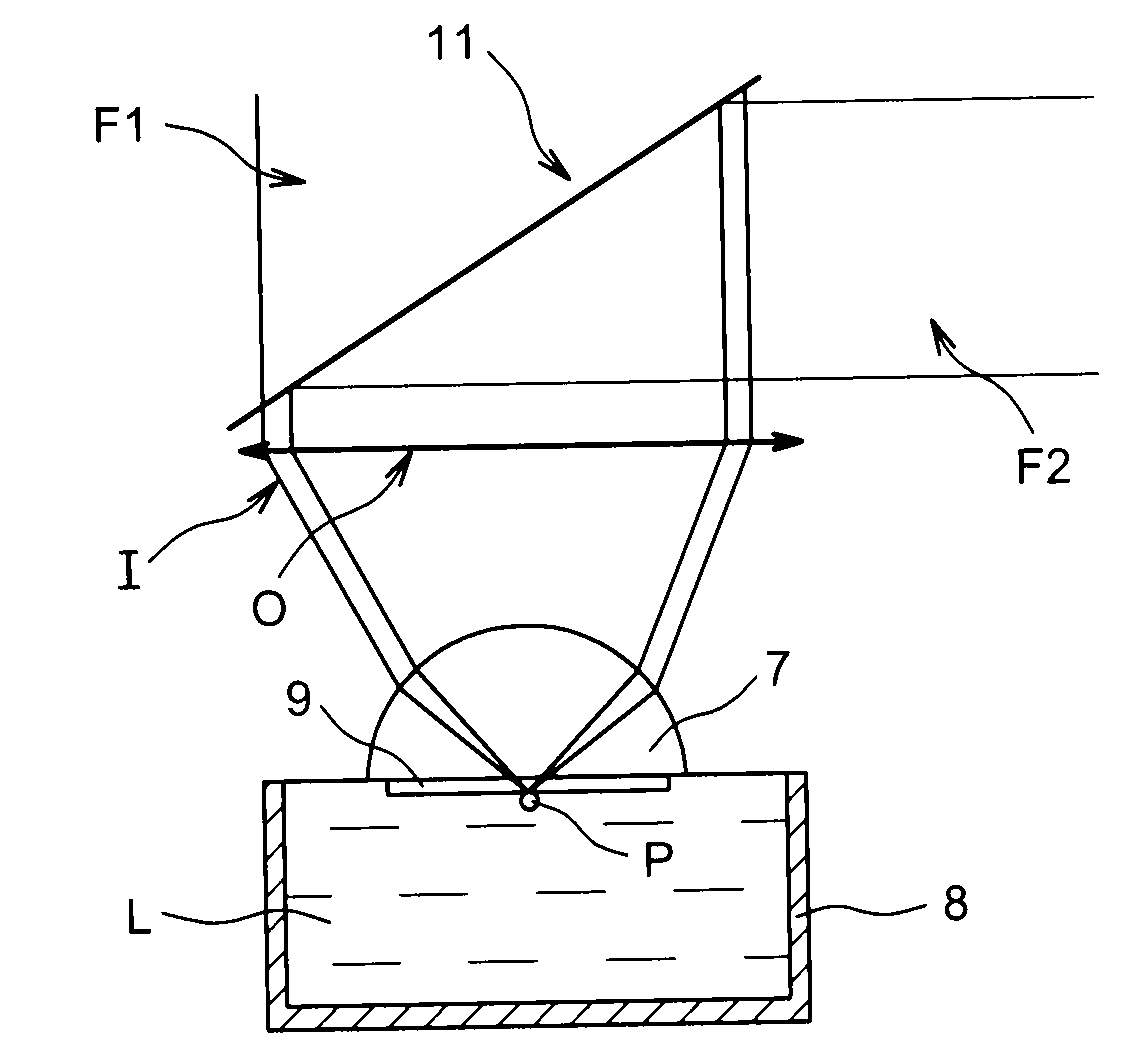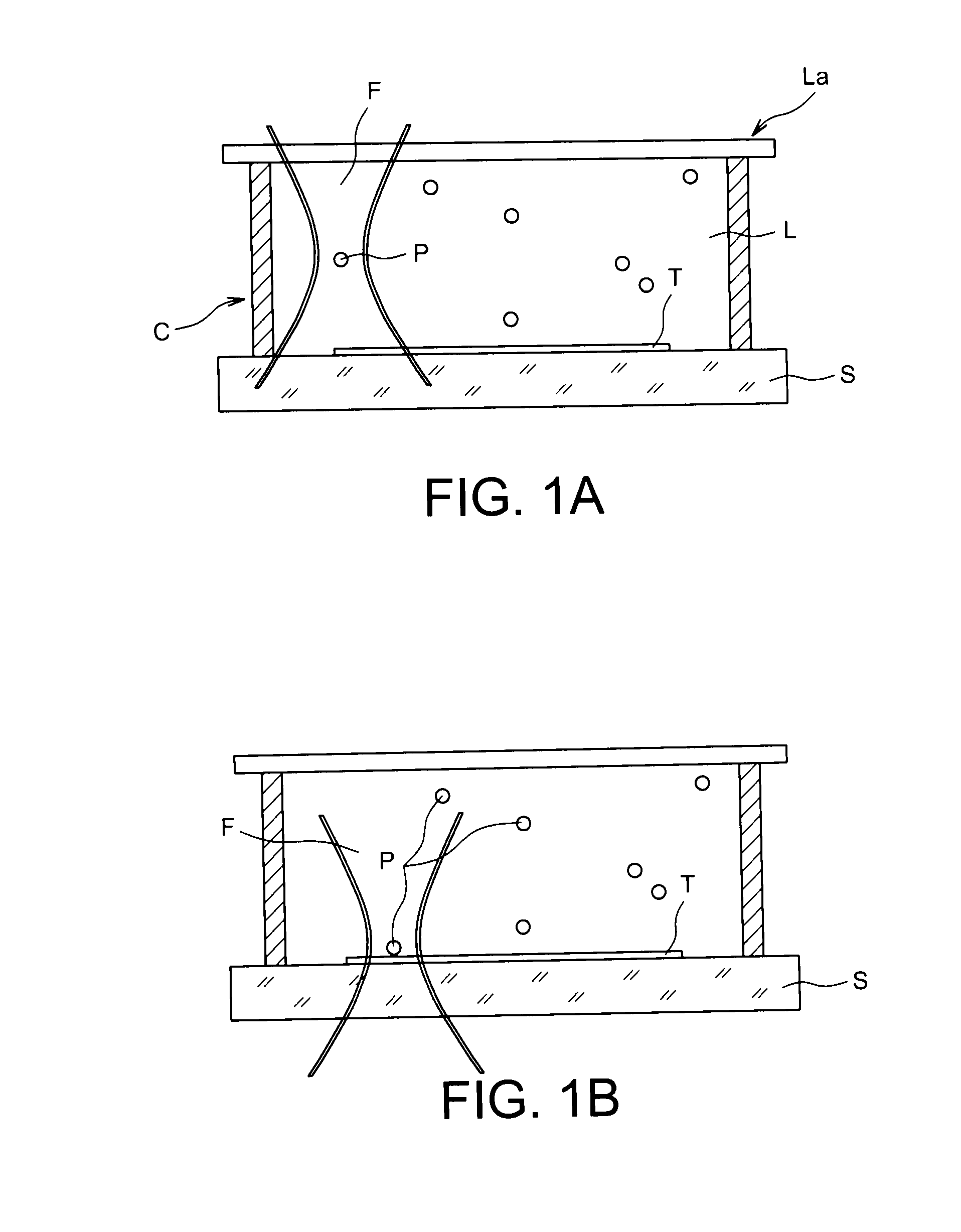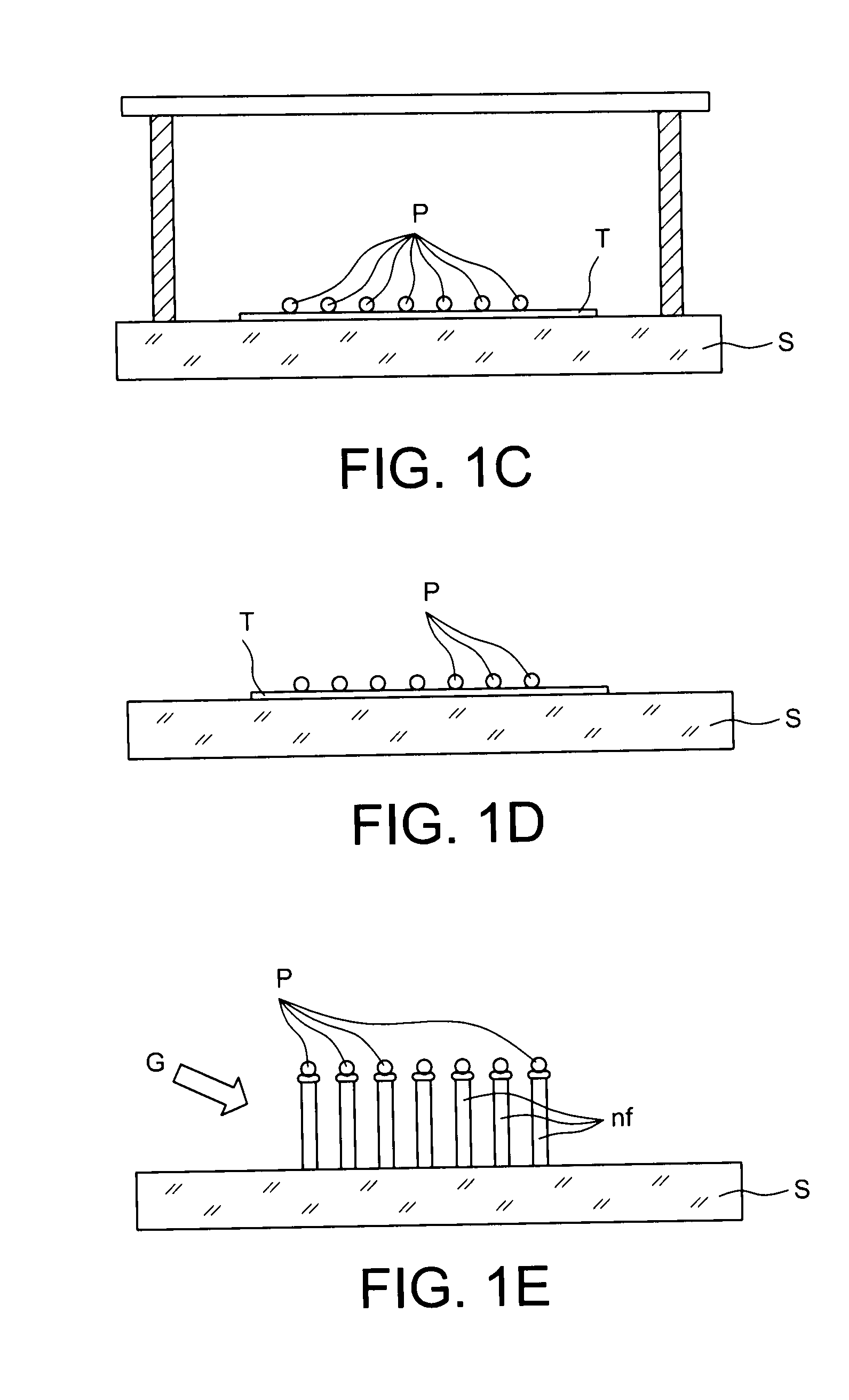Method of formation of nanowires and method of manufacture of associated optical component
a nanowire and optical component technology, applied in the direction of crystal growth process, radiation therapy, photometry, etc., can solve the problems of nanowire centrifugation, high cost and complexity of equipment required for implementing the method, and the use of metals with much higher temperatures, so as to achieve the effect of substantially improving the centrifugation problem
- Summary
- Abstract
- Description
- Claims
- Application Information
AI Technical Summary
Benefits of technology
Problems solved by technology
Method used
Image
Examples
Embodiment Construction
[0047]FIGS. 1A-1F represent successive steps of a method for positioned growth of nanowires on a substrate.
[0048]The optical clip is a light beam waist formed using a microscope objective the numerical aperture of which is greater than 1. The light beam from which the waist is formed is preferentially a laser beam.
[0049]Metal nanoparticles P are placed in a tank C containing a fluid, for example a liquid L. The bottom of the tank C consists of a semiconductor substrate S. An cover glass La constitutes, for example, a lid closing the tank. The face of the semiconductor substrate intended to be in contact with the liquid L has preferentially previously been cleaned by a known method, for example a method of the oxygen plasma treatment type. Also preferentially, a surface treatment T, for example a treatment using poly-L-lysine or treatment by aminosilane, covers the face of the semiconductor substrate which is in contact with the liquid in order to facilitate attachment of the particl...
PUM
| Property | Measurement | Unit |
|---|---|---|
| eutectic temperature | aaaaa | aaaaa |
| diameter | aaaaa | aaaaa |
| width | aaaaa | aaaaa |
Abstract
Description
Claims
Application Information
 Login to View More
Login to View More - R&D
- Intellectual Property
- Life Sciences
- Materials
- Tech Scout
- Unparalleled Data Quality
- Higher Quality Content
- 60% Fewer Hallucinations
Browse by: Latest US Patents, China's latest patents, Technical Efficacy Thesaurus, Application Domain, Technology Topic, Popular Technical Reports.
© 2025 PatSnap. All rights reserved.Legal|Privacy policy|Modern Slavery Act Transparency Statement|Sitemap|About US| Contact US: help@patsnap.com



